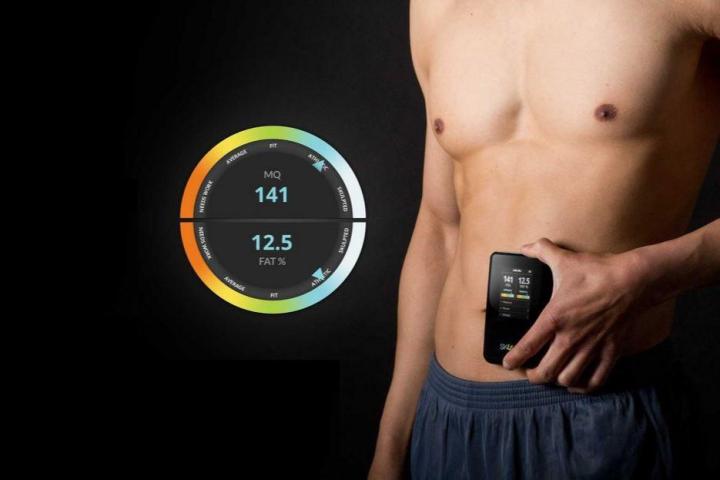
According to a report performed by YouGov and released by Skulpt, 72 percent of Americans still refer to a scale as an accurate measurement of their fitness. Only one in six actually uses a fitness tracker. The study focused on usage of fitness and activity trackers, which found that 69 percent of Americans have never owned a personal fitness tracker. Of those who have, 41 percent ditched them after a month or less.
This writer is intermittent with her fitness tracker, to be honest … and by “intermittent” I mean “haven’t used it in a year.” A few issues contributed to this abandonment. First, getting the most out of the app in question meant — and still means — being able to use it while actually riding my bike, by turning riding time on and off and check for routes, for example. The problem with that is phones are safest in your pocket when you ride. Setting it up in a visible spot means using rubber bands or getting a special holder for your bars.
For many a cyclist who’s in it for the speed, adding even an ounce or two to the bike is a cardinal sin. While most people don’t ride around in a full Lycra kit matched to a $10,000 bike, we still don’t want to add any weight or flinch at every bump wondering if it’ll be the one that dislodges that phone and sends it clattering to the concrete.
Second, you may be getting stronger but your battery isn’t. Adding yet another app or accessory to the slew of background processes running on your phone lessens the time a rider or runner can stay out and keep the ability to actually use a phone as a phone, you know, in case you need to actually make a call or reply to a message. It would be nice to be able to use both a tracker and an audio app without feeling like your phone is going to die after only an hour.

Also, every app has a little bit of a learning curve to get it. Strava has a dizzying array of features, for example, from general fitness tracking of your miles and speed to route and monthly challenges to linking all this info to Facebook so you can brag and race your friends — and that’s just the free version. The more obtuse the app interface, the less likely it is to retain users.
The three main factors that actually got people to buy a tracker, according to the Skulpt survey, were personalization features (body type, age, sex, build, sport), recommendation by a trainer or doctor, and a real-time app accompaniment that’s easy to understand. What kept people using one was the data storage and progress-tracking features, portability, and the access to real-time results.
Keep in mind, the report pointed out that of the group that tried a fitness tracker and later ditched it, one out of five said they gave up on it because the tracker couldn’t be trusted and inaccurately recorded their activity, rather like a trainer who parties too hard on Friday nights arriving late and out of sorts to your Saturday sessions.
Luckily, Skulpt’s Aim is designed to focus on specific areas — hence the name. We here at Digital Trends took a look at the tech when it was still an Indiegogo project. Based on medical tech designed to track muscular disorders, Aim targets and rates 24 individual muscle groups and measures their fat percentage. With info like that, you can focus on areas where fat is hiding, leading to a more sculpted body.
The Aim device negates the issues mentioned earlier in this article — as a separate, spot-check device, it doesn’t suck battery from your phone as do apps tied to external real-time sensors. While it does have the obligatory app, the Aim device stores up to 500 readings without syncing. The app provides deeper measurements and allows for comparisons over time, but you can still find out where the fat is without reaching for your phone every time.
There are other devices that provide real-time feedback without being totally dependent on your phone, like the Recon Jet Smartglasses, but they are still designed as a fitness tracker and a hands-free interface for your phone and other sensors like heart rate and cadence monitors. The Aim is not trying to track you, as in your motion through a physical space or your stresses while performing, but to track your improvement — the results of your hard work.

The learning curve is ridiculously low, too. The device displays a map of your body and your “Muscle Quality” determined by measuring biceps, triceps, abs, and quads. Essentially the Aim replaces the outdated modes of checking up on your physical progress like measuring only weight or Body Mass Index. So after you’re done toying with all of those during-workout trackers, ditch the stupid scale and the calipers — you’ll get a more accurate figure of your fitness.
Now if you’ll excuse me, I’m headed off the gym.


